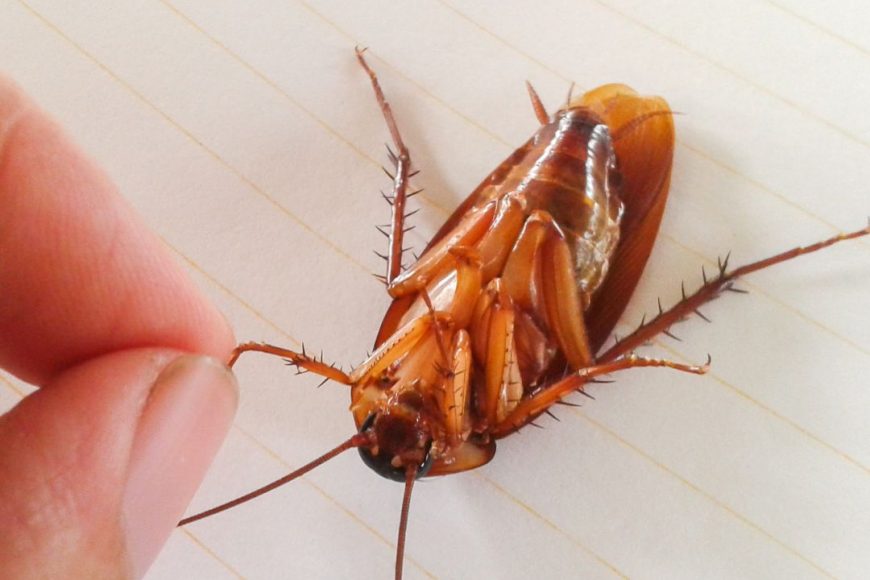Fill out the form below and a Cypress Creek representative will be in touch with you about your pest control needs.
BLOG

Unraveling the Intricacies of Common Cockroach Species
We’ve all had those spine-chilling moments – the sudden scattering of a cockroach across the kitchen floor, scurrying into some dark, unreachable crevice. These creepy crawlers are the things of nightmares for many, but hold your horses! The world of common cockroach species is a lot more intriguing than you might expect. Ready to dive into this enthralling journey through the universe of cockroaches? Buckle up, and let’s get started!
Common Cockroach Species
Ever wondered how many species of these unsightly yet intriguing creatures are out there? Well, it’s time to unfold the mystery. With over 4,600 species worldwide, the variety is vast, but thankfully, only a handful are common pests in human habitats. The most common ones being the German cockroach, the American cockroach, the Brown-banded cockroach, and the Oriental cockroach.
German Cockroach
Arguably the most notorious of all, the German cockroach (Blattella germanica) holds the trophy for the most common household pest. These tiny invaders, with their light brown color and two distinctive stripes, prefer to hide in warm, humid places like kitchens and bathrooms. Known for their prolific reproduction rate, these fellas give a whole new meaning to the phrase ‘multiplying like roaches’.
American Cockroach
Now, don’t let the name fool you. Despite the name, the American cockroach (Periplaneta americana) is native to Africa and the Middle East. This sizable species is reddish-brown, loves the great outdoors but won’t shy away from entering human dwellings in search of food. They are often found in damp areas, such as basements and sewers, thus earning the colloquial name, ‘water bug’.
Brown-Banded Cockroach
The Brown-banded cockroach (Supella longipalpa), true to its name, comes adorned with light brown bands across its wings. Unlike the German and American species, this critter doesn’t rely on moisture and can be found anywhere in the home. Its preference for higher locations and warmer temperatures gives it a unique living pattern.
Oriental Cockroach
The Oriental cockroach (Blatta orientalis), also known as the ‘water bug’, is a large, dark, and glossy species. Renowned for their love for damp and cool environments, these critters can often be found lurking around leaky pipes, basements, and even under decaying organic matter.
Cockroach Habitats and Behaviors
Have you ever wondered why cockroaches always seem to appear in the dead of night? Or why they prefer certain areas of your home over others? Well, these questions lead us to their habitats and behaviors.
Why are Cockroaches Nocturnal?
Cockroaches are primarily nocturnal creatures. They’re like those party animals who only come alive when the sun goes down. But, unlike party animals, their motivation isn’t fun; it’s survival. Being active during the night, when their predators are typically sleeping, decreases the chance of them becoming someone’s dinner.
Understanding Cockroach Hiding Places
If you’ve ever tried to catch a cockroach, you’ll know they’re masters of hide and seek. They can disappear into thin air before you’ve even had a chance to grab a shoe. They’re so good at finding hiding places because they have an affinity for confined spaces, a phenomenon known as thigmotropism. This desire to feel surfaces on their body leads them to squeeze into tiny cracks, crevices, and corners.
Life Cycle of Common Cockroach Species
The life cycle of a cockroach is quite fascinating. It consists of three stages – egg, nymph, and adult. Let’s break it down.
From Egg to Nymph
The cockroach’s life starts as an egg, contained within a special capsule called an ootheca. A single ootheca can contain dozens of eggs. After hatching, the baby roaches, known as nymphs, embark on their journey to adulthood.
The Journey to Adulthood
The transition from nymph to adult involves a series of molts. This is where the nymph sheds its exoskeleton to grow. With each molt, the nymph becomes more like an adult, ultimately gaining wings and reproductive capabilities.
Impact of Common Cockroach Species on Human Life
Despite their creepy demeanor, cockroaches have a significant impact on our lives. Let’s unravel these layers one by one.
Cockroaches as Pests
When it comes to wreaking havoc in human homes, few insects are as notorious as the cockroach. Not only do they elicit feelings of disgust and fear, but they can also contaminate food, damage materials, and cause allergic reactions.
Role in Ecosystem
On the flip side, cockroaches play an important role in our ecosystems. They act as decomposers, breaking down organic matter and returning nutrients to the soil. So, while they may be a nuisance in our homes, they are essential contributors to our environment. Contact us today for a free cockroach control estimate!

